The Evolution of Rural Protest
It is often assumed that protest is an action of those who reside in towns and cities, as civil unrest circulates more freely where populations are denser. But those who live in the countryside are no less desiring of social and economic justice than city-dwellers.
Join us as we explore several rural protests in England across the last two hundred years, telling their stories through the objects and archives held in The MERL collection. We will be looking at not only the causes and consequences of these movements, but tracking how rural protest evolved from a local to a national and ultimately international scale.
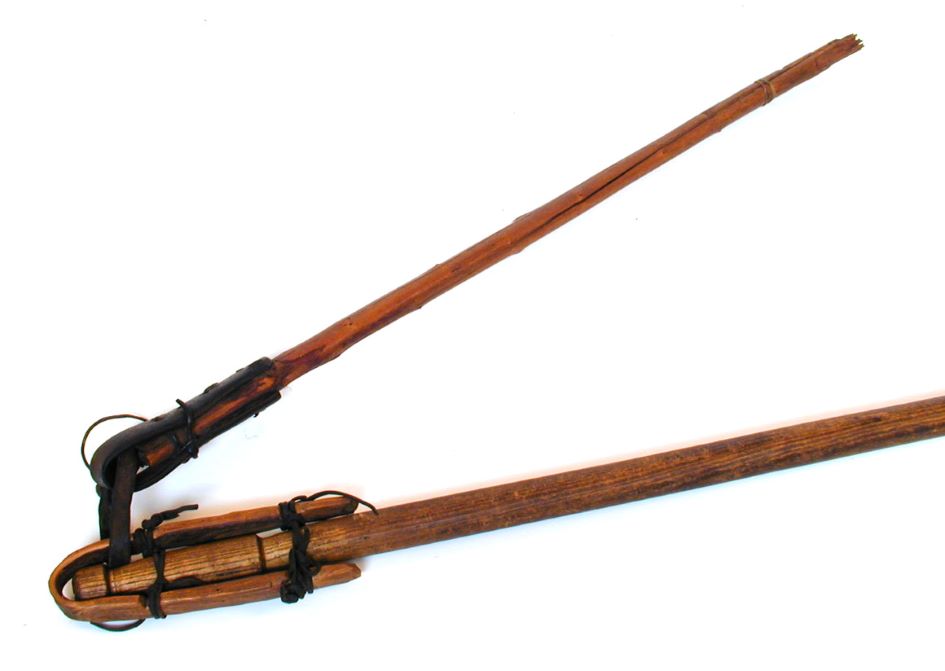
The Swing Riots - The Rise of Captain Swing
Traditionally, English agricultural labourers had always depending on their ‘threshing’ wage during the harsh winter months. This involved using a flail (pictured) to manually remove grains from crop stalks. However, in the first few decades of the nineteenth century, threshing machines – which required a much smaller workforce – became very popular with farmers. In addition, the English and Welsh population doubled between 1750 and 1840, leading to a serious oversupply of labour.
By August 1830, the situation had become untenable, and the necessary support could not be provided by local parish relief systems. Forced into desperate action by the prospect of starvation over winter, farm labourers across southern and eastern England began smashing threshing machines and setting fire to barns. Some farmers and rural officials – though not as many as myths would have us believe – received threatening letters signed by the infamous figurehead known across the country as ‘Captain Swing’. Or, as he sometimes signed it, like a character from the Avengers, ‘Swing’.
MERL 51/266
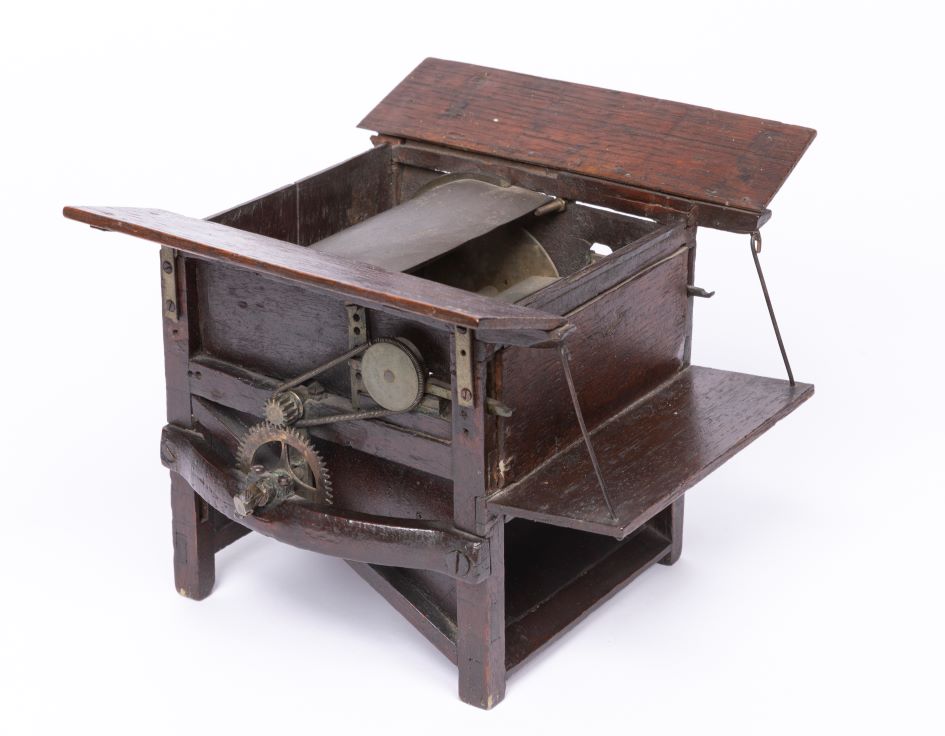
The Swing Riots - Anger in Berkshire
Though the Swing Riots erupted across a number of counties, including Kent, Sussex, Hampshire and Wiltshire, it was not a national movement. Local groups each had different methods and desires. Events in Berkshire are an excellent example of this.
Angered by the unfair imprisonment of a vagrant, a group of 200 villagers from Kintbury smashed a threshing machine at Inkpen. They then toured the surrounding area, setting fire to machines and demanding money from landowners (including the perhaps aptly named Lord Craven, who immediately surrendered all his cash). Finally, the local MP’s own machines were dragged into the town centre and destroyed. The Evening Mail described these events as ‘civil war’.
Joining with a crowd from Hungerford, the rioters’ demands focused entirely on local wages; they requested 2s 6d per day, which a deputation of local gentlemen reluctantly agreed to. The rioters did not care about national reform, and only prioritised their own local communities.
The pictured threshing machine is the type that may have been smashed by the Berkshire rioters.
MERL 51/2
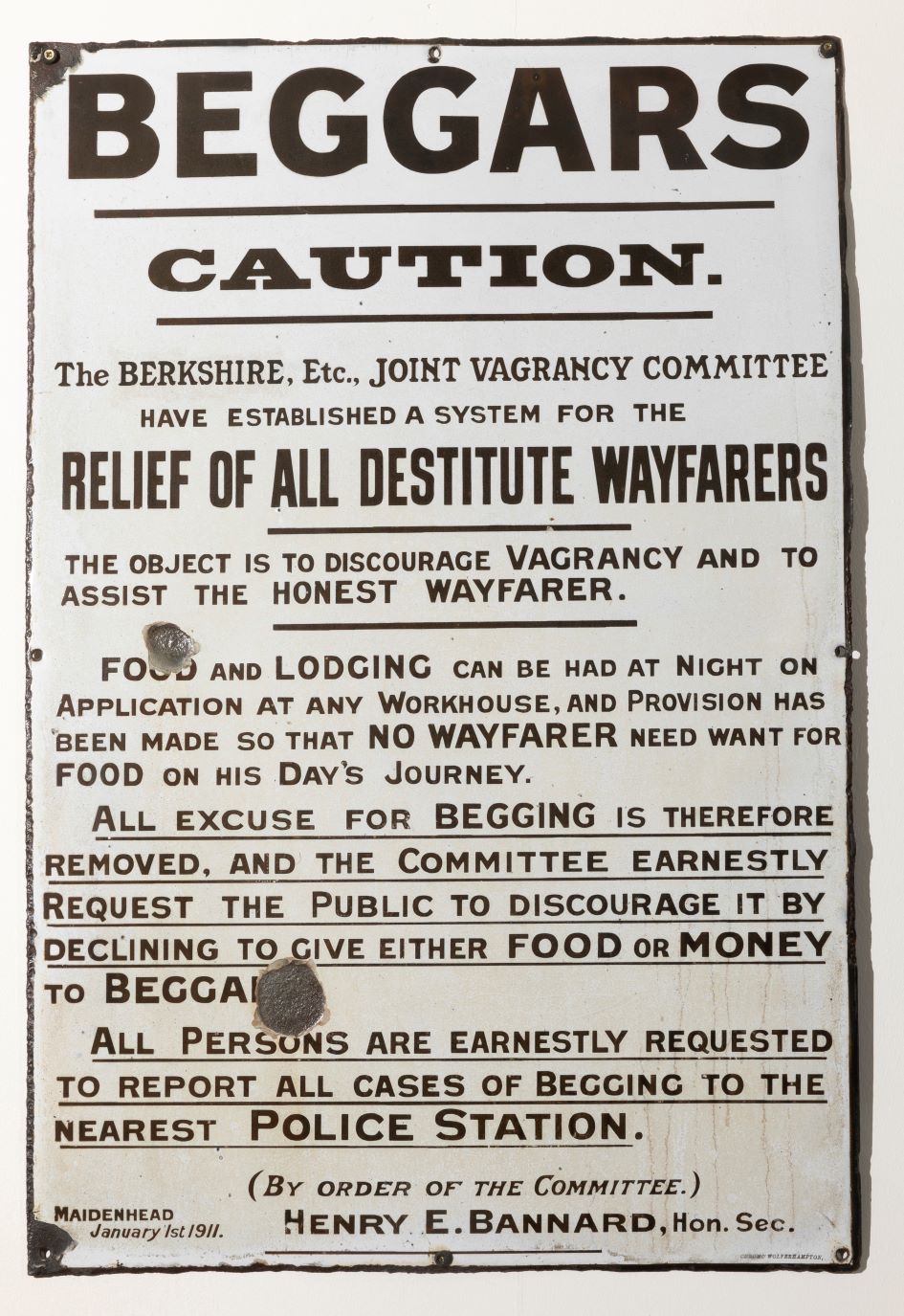
The Swing Riots - Repression and Workhouses
With each county focusing on their own issues, and no national coordination, it was easy for the riots to be crushed by the government. In the short term, the riots were put down by force. In Berkshire, Grenadier Guards and Lancers marched from London and surrounded Kintbury, prosecuting anyone with even a remote connection to the rioters. One man, Josiah Burton, hid in the local pub’s boiler for three days to evade capture! William Winterbourne, a leader of the rioters who had been dubbed ‘Captain’ to emulate Captain Swing, was executed to serve as an example.
In the long term, the Swing Riots caused Parliament to realise that the rural poor relief system needed to change. However, as agricultural labourers had zero representation in Parliament, this backfired on them in a tragic way. The new 1834 Poor Law established workhouses. Rather than providing education and sanctuary as intended, they created fear and further destitution.
60/173
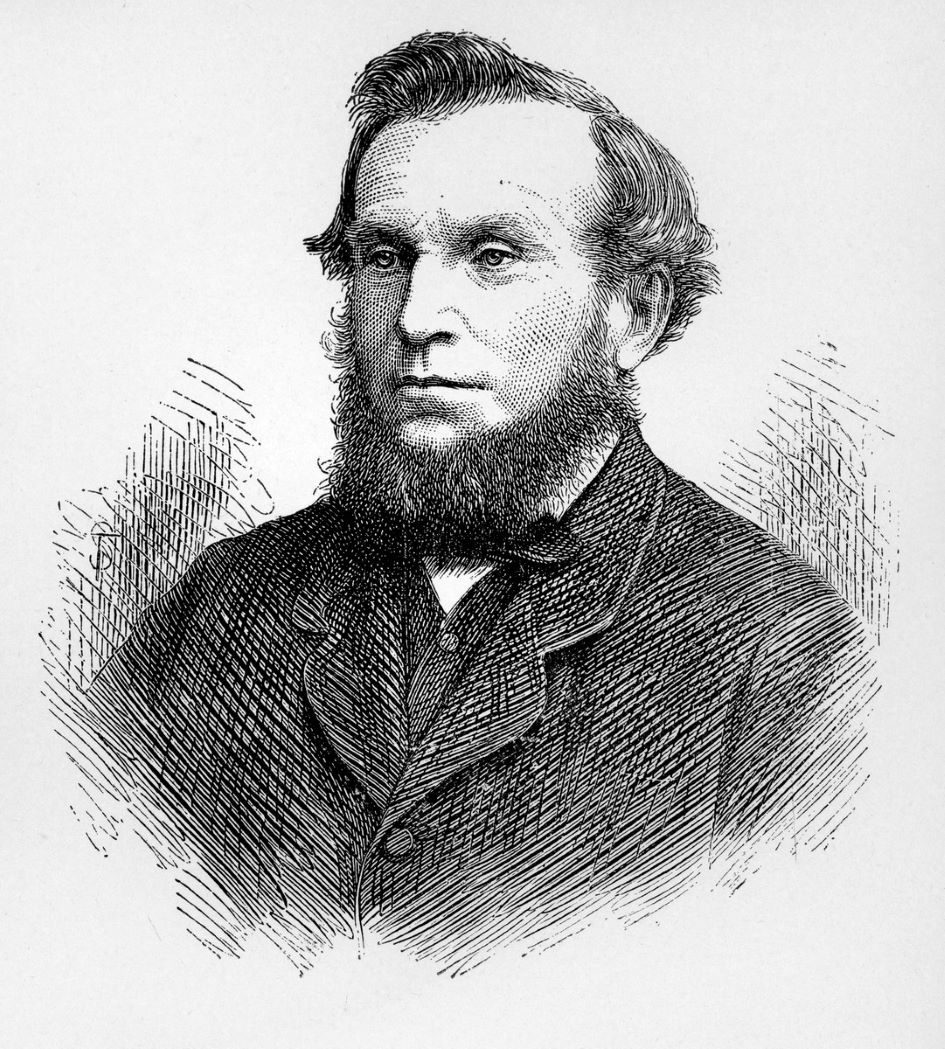
The NALU - Joseph Arch
Following the failure of the Swing Riots, several decades passed where resentment continued to simmer. Labourers needed a voice to speak for them, and that voice was found in the figure of Joseph Arch, a hedger and ditcher from Bedford whose natural talent for speaking drew enormous crowds. Such was his popularity that Arch was able to form the National Agricultural Labourers’ Union in 1872. They fought for improved wages across many counties, and had accrued a membership of 86,000 by 1874.
Such was Arch’s reputation as a leader and speaker that he was elected as the MP for North West Norfolk in 1885, the first agricultural labourer to achieve such status.
SR 3NUAW J/2
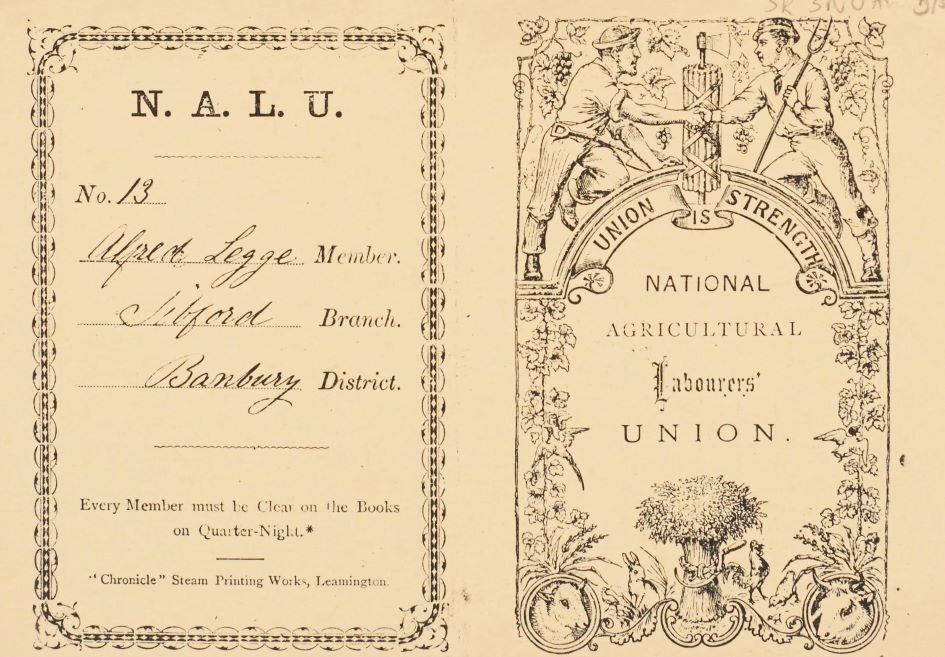
The NALU - Early Successes
In their early phase, the NALU met with initial success. Around 3,000 NALU members emigrated to Canada in order to drive down the oversupply of English rural labour. Furthermore, the NALU took strides towards making the cause for the enfranchisement for all agricultural workers by involving themselves in local politics. In Lincolnshire and Norfolk, they became engaged with charity administration, reform of game laws, and laws to promote allotments.
This image shows the NALU membership card of Alfred Legge. It dates to 1885.
SR 3NUAW J/4
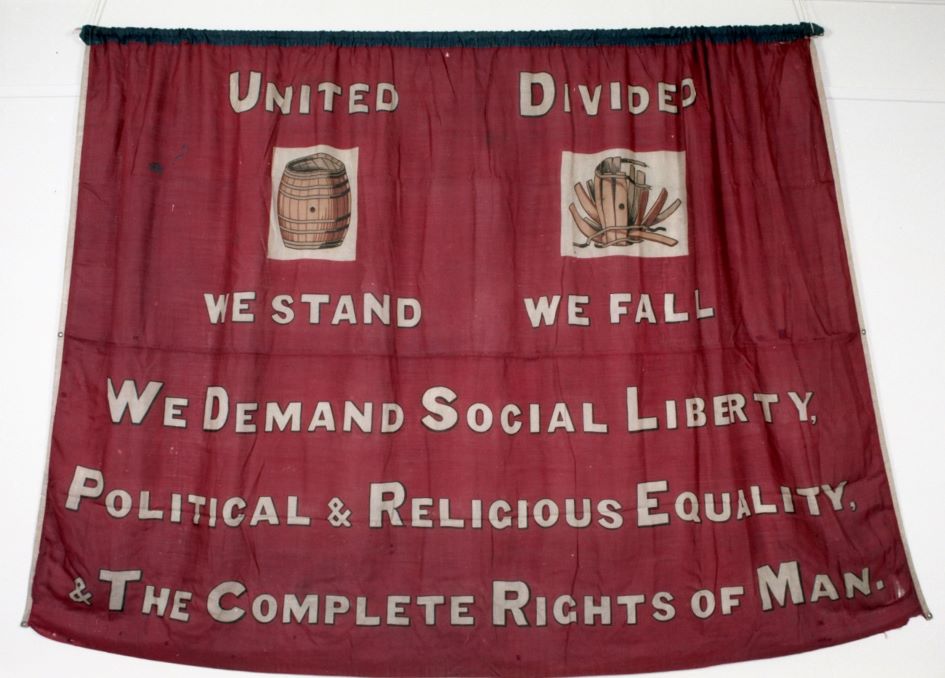
The NALU - Defeat in Suffolk
However, the NALU’s attempted strike and protest action was less of a success. It was very difficult to coordinate such actions as many members would have to walk miles to attend.
The Union’s most notable strike began in March 1874, in Exning in Suffolk. However, events spiralled out of control when local farmers agreed to sack any and all members of the Union. The lock-out cost the Union £24,432, and it ceased to issue strike pay on 10th August. Forced into submission, the labourers bitterly broke off from the NALU and returned to work. This led to a rapid drop in membership numbers, worsened by the agricultural depression which began in 1879, and despite a couple of minor resurgences, the NALU collapsed in 1896.
This banner, dating from c.1883, would have been displayed by NALU members during strike action.
MERL 61/47
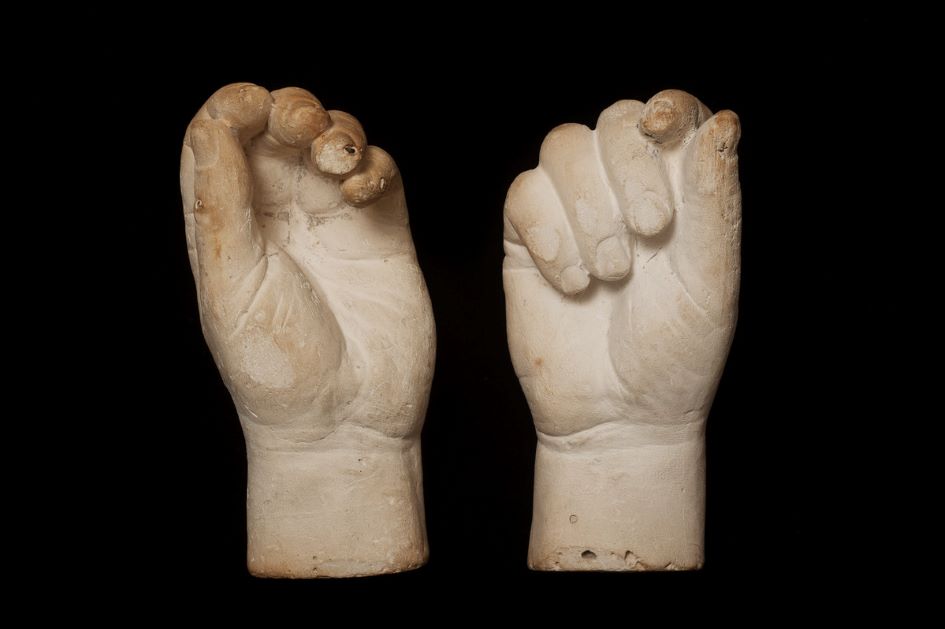
The NALU - Arch's Growing Disillusionment
So why did the NALU fail?
They had certainly achieved more of a national vision than the Swing Riots had. However, they were plagued by poor communication. Additionally, Arch himself became more and more ostracised from agricultural labourers, who he felt had betrayed him during the Exning Strike. This evolved into outright bitterness when he lost the North-West Norfolk seat in 1886. Although re-elected in 1892, he never had a serious impact on Parliament.
The plaster cast of Arch’s hands (pictured) are perhaps symbolic of this. They are not as weathered as one might expect a labourer’s hands to be, showing how distant he became from his origins. Very little is known about the origin of the cast, so this is only a theory.
Although the NALU did not achieve much lasting change, they did lay the framework for a far more potent and combative Union…
MERL 75/16/1-2
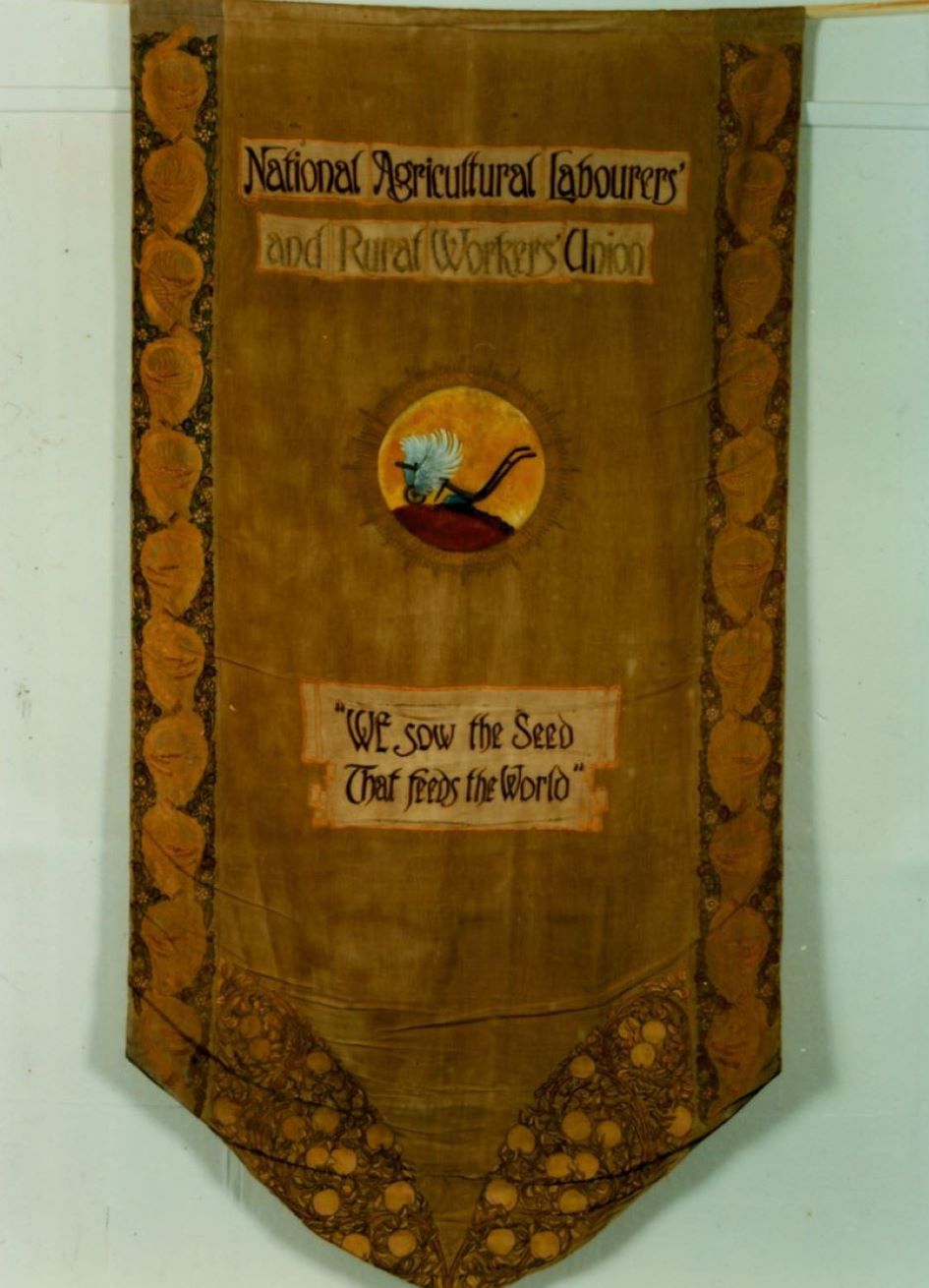
The NUAW - Resurrection in Norfolk
The need for social justice in the countryside did not disappear when the NALU dissolved. When the Eastern Counties Agricultural Labourers & Small Holders Union emerged in Norfolk in 1906, it rapidly grew in popularity. Realising that it could have an impact beyond East Anglia, the Union changed its name to the National Agricultural Labourers and Rural Workers Union in 1910, and again to the National Union of Agricultural Workers (NUAW) in 1920.
Their key aim was simple: to fight for a reasonable living wage. By 1912, the cost of living had risen to 15s 10½d for the average farm worker, and the average wage being just 14s led to unbearable poverty for many. Norfolk Union members were the first to overturn this, using mass strikes to achieve 16s per week and a Saturday half-holiday.
The image shows the NUAW’s first banner, created in 1913.
MERL 61/235/1
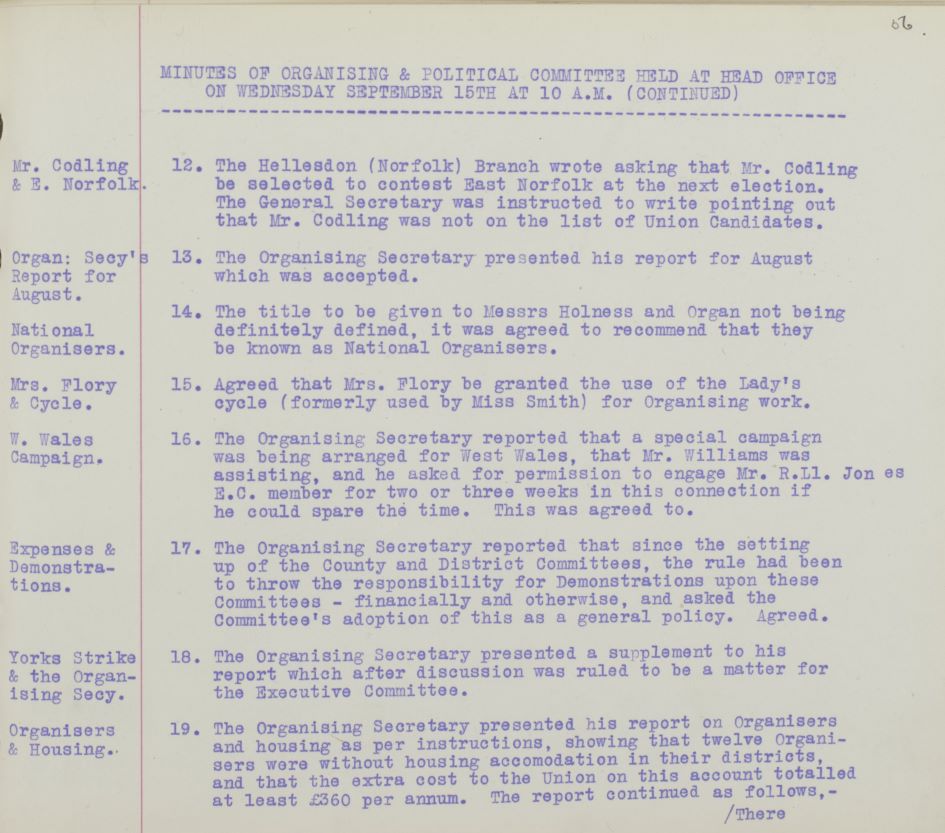
The NUAW - Cycling for Success
The NUAW organised their action by using a tool crucial to any discerning activist in the early 20th century – the bicycle!
One member, Bill Holmes, rode out into the countryside with 150 cyclists to spread the word of the Union. The speakers did not always have an easy time, and there were various instances in which they were pelted with stones. This led Holmes to advise speakers: ‘if you find a heap of stones, get on it and speak from it – you will be in command of the ammunition’.
The minutes of the Union’s Political and Organising Sub-Committee show how important cycling was to Union activity. For example, Mr Rose, the Secretary of the Dunchurch branch, asked for £4 in October 1919 to cover his cycling expenses. As we can see from the minutes (pictured), there was a special ‘Lady’s cycle’, which was used by a Mrs Flory in September 1920.
SR NUAW B/III/1

The NUAW - The Great Strike
The Corn Production Act of 1917, designed to improve food production in wartime Britain, was the first to guarantee a nationwide minimum wage for agricultural workers. This was set at 25s per week, and 30s in Norfolk. However, soon after the war concluded, wages plummeted, leading to a sense that the Government had betrayed the Union and all its members. Norfolk weekly wages were at a minimum of 46s in 1921, but this had dropped to 25s in 1923.
Determined to turn the tide, the Union organised an action which became known as ‘The Great Strike’. Across the months of the strike in 1923, there were never less than 6,000 rural labourers on strike, and it was often more than 10,000. Although the protests were mostly peaceful marches, there was some violence, such as when a picket visited the farm of Henry Overman and ‘clouted’ the volunteers working there!
Following talks with PM Ramsay Macdonald, the national minimum wage was reinstated. The NUAW continued to fight for rural workers until 1982, when it merged with the General Transport and Workers’ Union.
P FW PH2/N13/1

The NUAW - George Edwards
One key difference between the NALU and the NUAW is that the leadership of the NUAW never seemed to lose touch with its core membership. An excellent example of this is George Edwards, who was General Secretary and later Union President. Edwards grew up in terrible poverty, including time in a workhouse when his father was imprisoned for theft. His first employment was as a bird scarer; he would have used an object similar to the one pictured.
Edwards became a dedicated member of the NALU in 1873, returned to his job as a brick-maker when it disbanded, and was a founding member of the NUAW in 1906.
Edwards was the second agricultural labourer to be elected to Parliament (after Arch) in 1920. Despite poor health, he vigorously spoke out against the Poor Law and rural unemployment. He fought tirelessly for the rights of workers until the end of his life; he attended the Walsingham Board of Guardians two weeks before his death, where he argued forcefully against the eviction of a farmworker’s family.
MERL 51/507
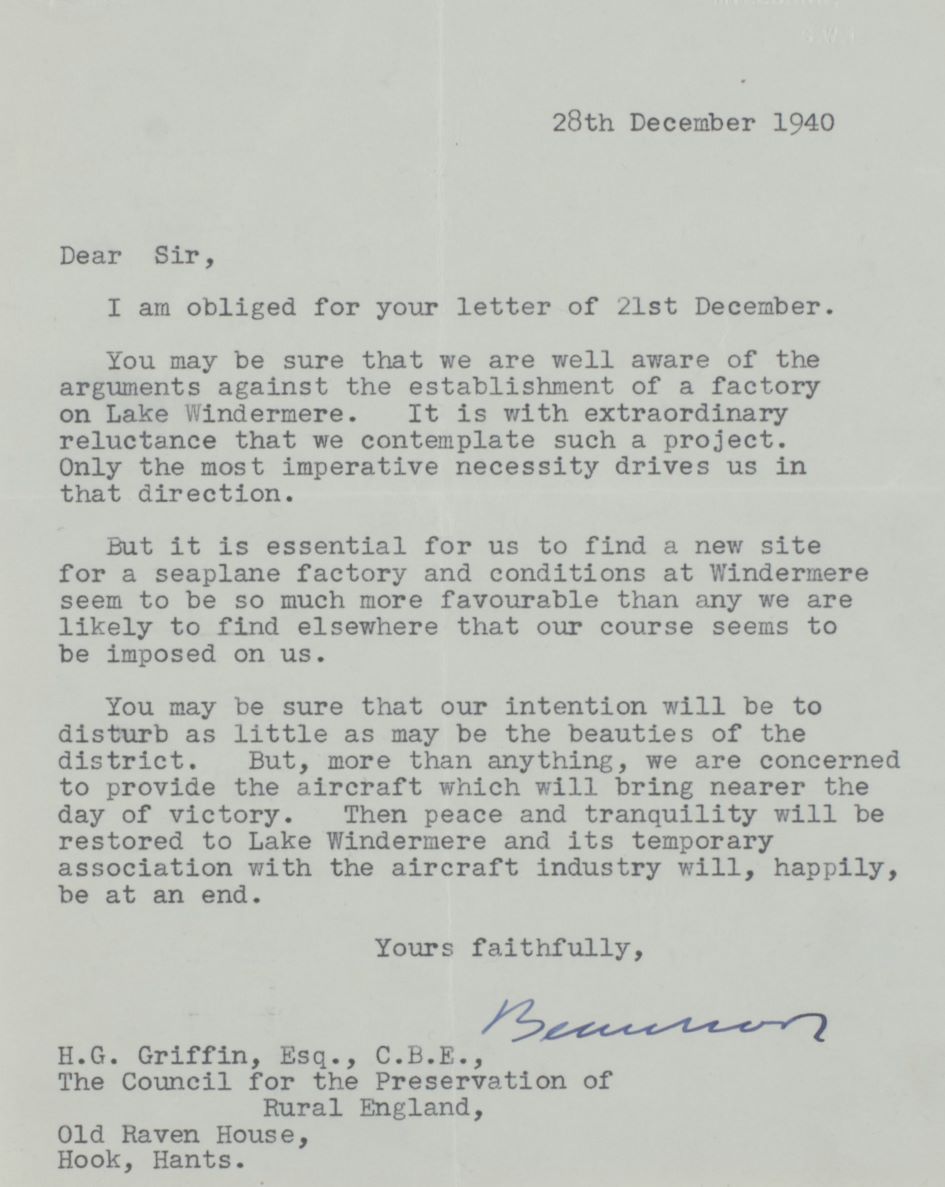
The CPRE - Protest without protest
Whilst the NALU and NUAW did draw national support, the majority of their early action was conducted in Norfolk and so still had a relatively local focus. The Council for the Preservation of Rural England (CPRE) was arguably the first rural organisation to have a truly national scope. Founded in 1926 as a coalition of interest groups, the CPRE aimed to defend rural landscapes through lobbying and advising governments, rather than strikes and marches.
Throughout World War II, the CPRE was the only voice to speak out in defence of the countryside in a period of rapid militarisation. For example, they fought the construction of a Short Sunderland Flying Boat Factory by Lake Windemere in the Lake District. Minister for Aircraft Production, Lord Beaverbrook, was lobbied by CPRE members within government. Though the factory was built, Beaverbrook made the concession that the site would be returned to its rural state when the war concluded.
SR CPRE C/1/36/4

The CPRE - Education on Rural Protection
As well at outright appealing to government, the CPRE have always striven to focus on education, empowering the public to protest against defamation of the countryside themselves. The Wild Plant Conservation Board, formed by the CPRE in 1931, produced material specifically designed to be distributed to schools.
The Board also encouraged teachers to take children out into nature to deepen their understanding of it, and show them the importance of plants remaining in their natural habitat. Specifically, children were instructed to pick only common flowers and weeds, thinking carefully about sustainability.
This poem was publicised by the CPRE to encourage both children and adults to leave wild flowers in their natural habitat.
SR CPRE C/1/76/2

The CPRE - Modern Goals
The CPRE – now the Campaign to Protect Rural England – is still actively protesting against the ruination of rural landscapes. In 2010, their manifesto prioritised the use of brownfield land for new construction, as well as an expansion of green belt land. Their policies against littering included the ban on free plastic bags. Although the CPRE did not put forward candidates for elections, those living in rural areas were encouraged to pressure their candidates on these issues.
Even more recently (in July 2020), the CPRE published the policy booklet ‘Greener, Faster, Better’, which advocated for the reduction of carbon in the atmosphere by undertaking massive planting schemes. They aim for nationwide hedge length to be increased by 40% by 2050, new rural buildings to be built to carbon zero standards, and for public transport links between rural communities to be improved.
MERL LIBRARY PAMPHLET--2860-BOX 01/09
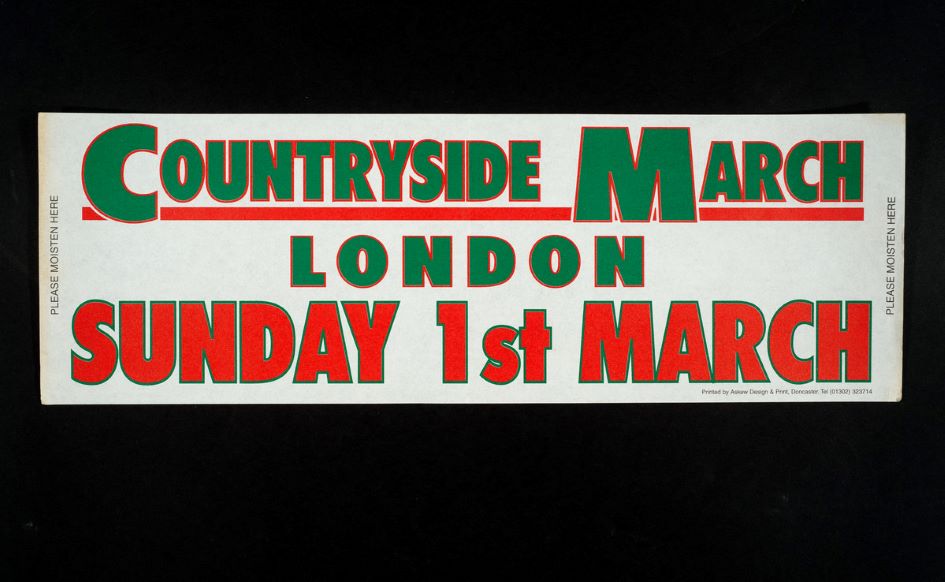
The Countryside Alliance - A National Movement
Up to this point, none of these organisations had been able to muster a nationwide popular movement among the rural population. However, the actions of the Countryside Alliance around the turn of the millennium showed that rural protest was now a different beast altogether.
Forming in 1997, the Alliance’s initial aim was to focus on preventing the hunting ban. However, they knew that they would have to expand from this to gain greater support, and so set out to generally combat urban ignorance on rural life.
The first march was on 27 July 1997 and attracted 120,000 people. Over 300 TV and radio interviews were given, bringing rural issues strongly to political attention. The rally of 1st March 1998 at Hyde Park was attended by nearly 300,000 people. It was in direct opposition to MP Michael Foster’s bill to ban hunting with dogs.
MERL 2011/36
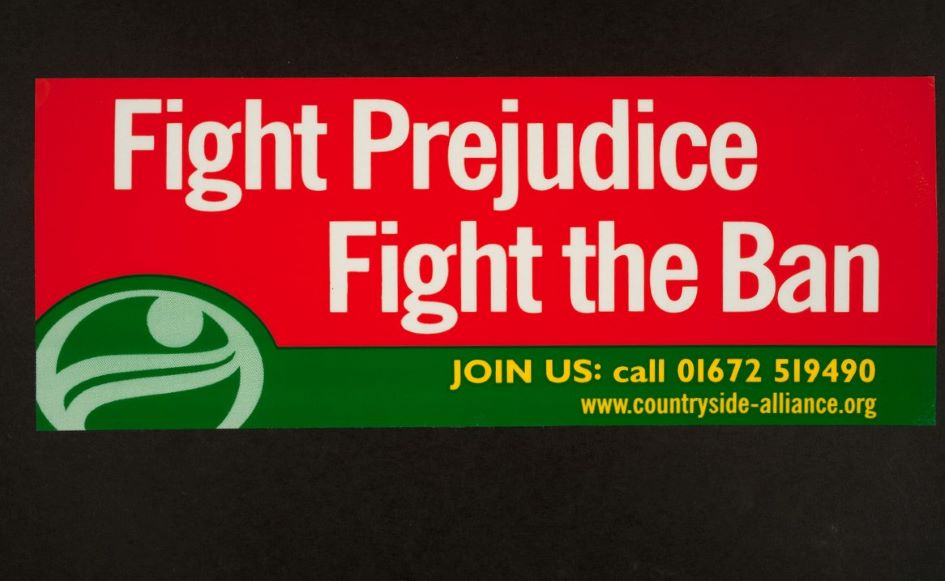
The Countryside Alliance - Methods, Message and Opposition
This rapid growth can be partially attributed to the Alliance’s adoption of new communication methods to both organise protests and spread their message on a national scale. For example, by 2003, their newsletter distributed via email reached 250,000 people.
The Alliance also appealed to the emotions of its members and its audience, such as this speech by Lady Mallalieu in 1998: ‘We cannot and will not stand by in silence and watch our countryside, our communities and way of life be destroyed forever by misguided urban political correctness […] it is about tolerance of minorities, and sadly those who live in the countryside are now a minority.’
However, not all rural communities or organisations were swayed. Both the CPRE and National Trust refused to participate in Alliance marches, stating that they were too focused on hunting.
MERL 2011/35
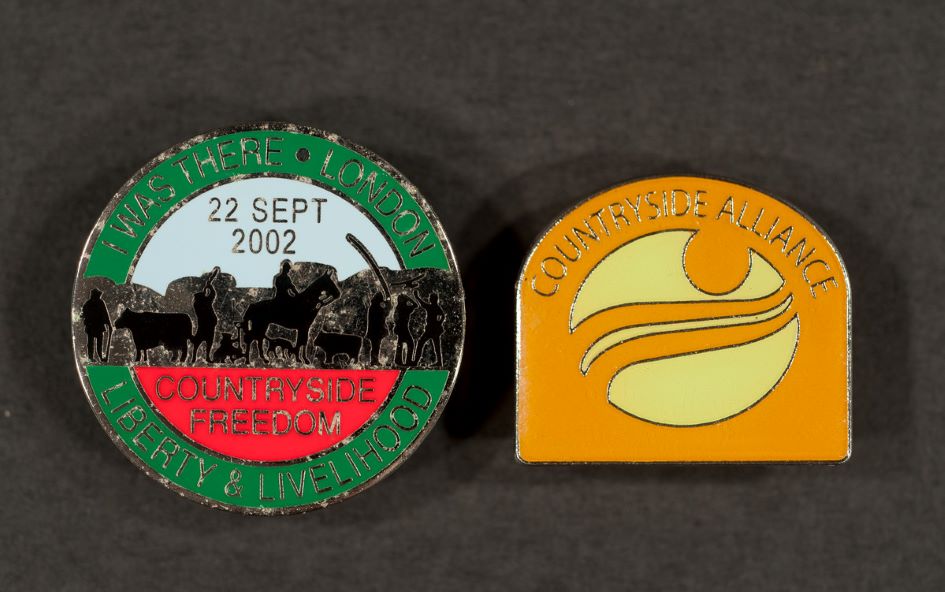
The Countryside Alliance - The 2002 March
The work of the Countryside Alliance culminated in the ‘Liberty and Livelihood’ march, an enormous undertaking in September 2002 during which around 400,000 people marched through central London to Whitehall. The majority of signs and banners were objecting to the proposed ban on hunting with dogs, though some were also unhappy about international food importation and other rural issues.
The national nature of this movement was made clear by the lighting of beacons up and down the country. However, these were not evenly spread; it is estimated that 289 beacons were lit in Gloucestershire, and only 20 in Berkshire.
Regardless of whether the Alliance had the support of all rural communities across the country, this march did show another interesting evolution; whilst the NUAW had a strong affinity with the Labour party at the start of the 20th century, the Alliance was now in direct opposition to it.
MERL 2011/32-33
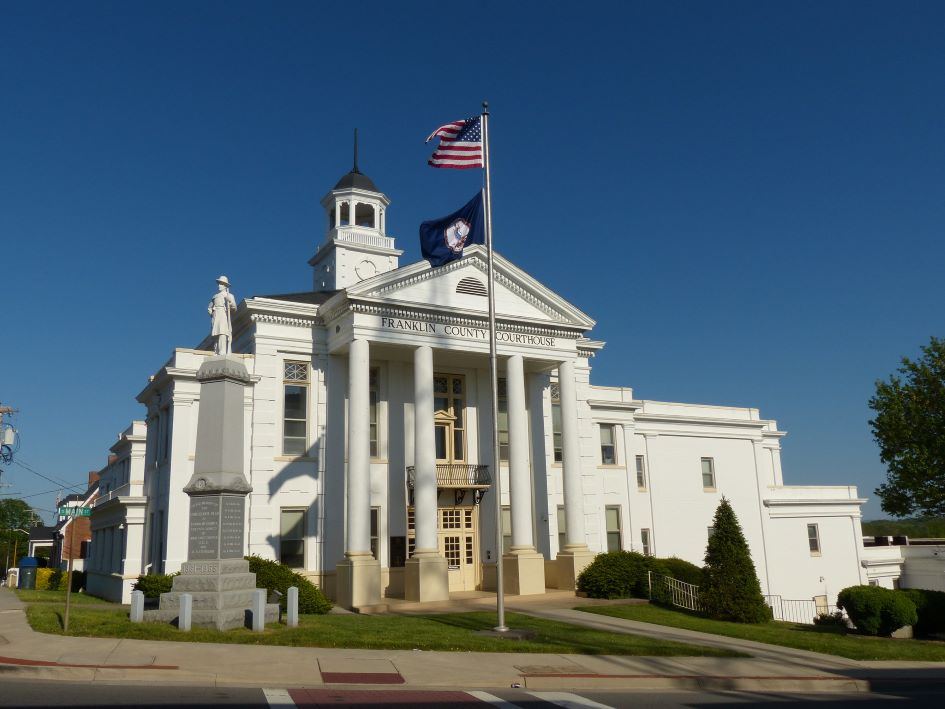
Black Lives Matter - an international phenomenon
We now move to the final stage of the evolution: rural protest which crosses national barriers.
Inflamed by the death of George Floyd in May 2020, Black Lives Matter protests erupted all across the USA, even in rural areas where more conservative communities previously did not participate.
For example, Bridgette Craighead, Katosha Poindexter and Malala Penn held the first ever Black Lives Matter protest in rural Rocky Mount, Franklin, Virginia, by the statue of a soldier in a Confederate uniform. They also gathered on Juneteenth, the day in which the abolition of slavery in the USA is commemorated.
This escalated into a movement of local protests and despite local conservative resistance, real change was enacted. Notably, the local School Board agreed to ban confederate flags, and unprecedented town hall meetings were held to discuss race relations in Franklin. A petition was also started to remove a statue of a confederate soldier from outside the Franklin County courthouse (pictured).
Credit Kipp Teague. Accessed via Creative Commons
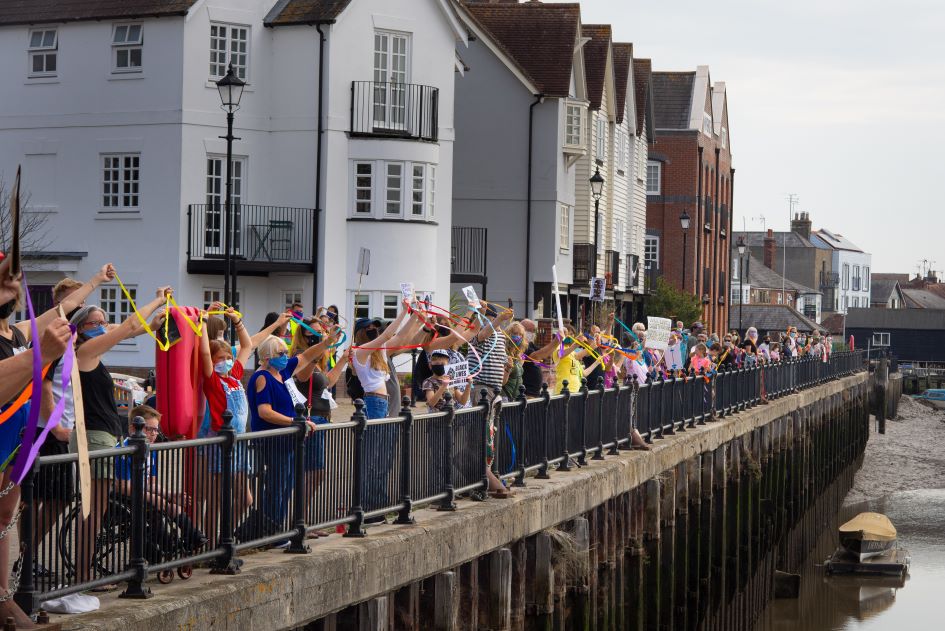
Black Lives Matter - UK rural protest
Inspired by the US movement, a wave of Black Lives Matter demonstrations also occurred across the UK, in part to show solidarity with the USA, but equally to highlight domestic racial injustices. For the first time, these peaceful protests gained significant traction in rural areas.
For example, hundreds turned out for a protest along the edge of the River Colne in North Essex (pictured), in an event which seeks to inspire further anti-racism movements in rural areas. The socially distanced protest was recorded via a drone and recorded online. Specialist anti-racism leaflets and resources were released online to further this aim.
Courtesy of Gurpreet Kaur

Black Lives Matter - Interview with Gurpreet Kaur
We were very grateful to have the chance to virtually interview Gurpreet Kaur, who organised the River Colne protest and founded the BLM In the Stix group.
Below, click the first play button to hear an excerpt of Gurpreet speaking about the advice she would give to those who want to combat racism in their own rural community.
Click the second play button to hear the full interview.
Image courtesy of Gurpreet Kaur
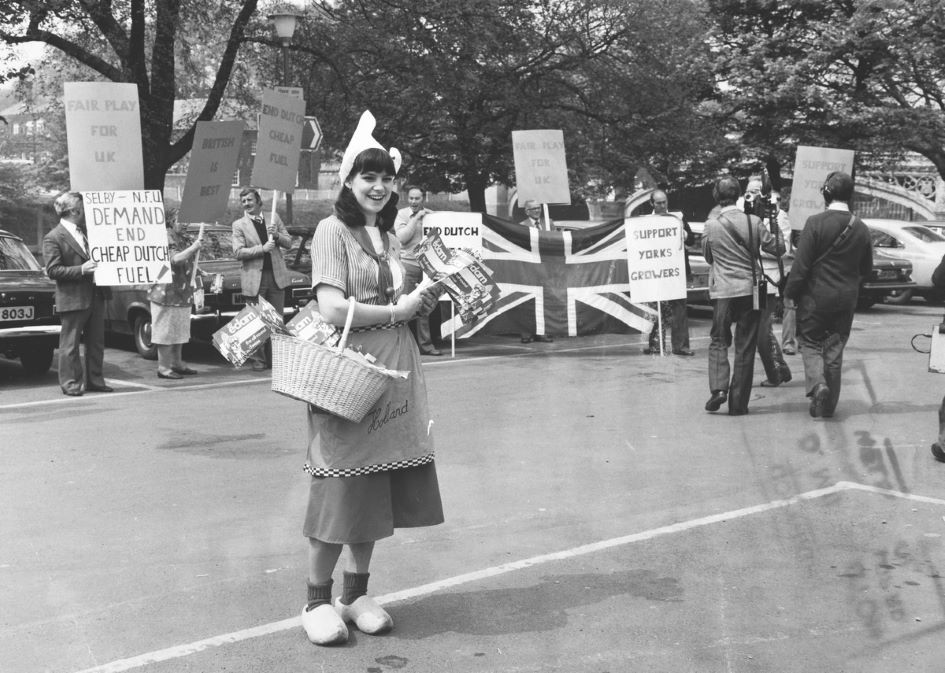
The story of rural protest... so far!
In the stories collected here, we have simply scratched the surface of the history of rural protest in this country. There are other organisations we haven’t mentioned, such as Save British Farming and the National Farmers’ Union (and one of their protests from 1981 is pictured below).
There has been a clear development in the organisational capacity and effectiveness of rural protesters over the past two hundred years: from the violent Swing riots which could not coordinate from county to county; to Black Lives Matter which is undertaking peaceful protests and forming networks both nationally and across the globe.
P 2FW PH2/398/1